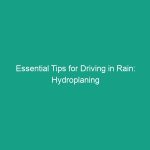Introduction
In today’s fast-paced work environments, protecting our health, safety, and the Environment (HSE) is paramount. Among various Hazards, noise-induced hearing loss is one of the leading Occupational Health issues. This condition can be irreversible, leading to significant impacts on quality of life and productivity. Understanding the correct use of hearing protection is essential for employees working in noisy environments. This article aims to provide comprehensive guidelines to ensure that hearing protection is used effectively, thereby safeguarding workers’ auditory health and enhancing Workplace Safety.
Understanding Noise-Induced Hearing Loss
Noise-induced hearing loss (NIHL) occurs when the inner ear is damaged due to prolonged exposure to loud noise. The World Health Organization (WHO) estimates that around 1.1 billion young people are at risk of NIHL due to exposure to loud sounds, especially in recreational settings. In the workplace, it is crucial to recognize the significance of this health challenge.
The Mechanism of Hearing Damage
When exposed to loud noise, tiny hair cells in the cochlea of the inner ear can become damaged. Over time, these cells may die, leading to permanent hearing loss. Notably, sounds above 85 decibels (dB) can cause damage, and many industrial settings expose workers to levels well above this threshold.
Symptoms and Diagnosis
Workers may not immediately recognize the symptoms of NIHL, which can include muffled hearing, ringing in the ears (tinnitus), and difficulty understanding speech, particularly in noisy environments. Regular audiometric testing can help detect early signs of hearing loss and facilitate prompt intervention.
Regulatory Frameworks and Standards
Various agencies set Regulations to protect workers from noise exposure. In the United States, the Occupational Safety and Health Administration (OSHA) outlines permissible noise exposure limits and mandates hearing conservation programs in workplaces where noise exceeds 85 dB averaged over an 8-hour day.
osha Standards
OSHA has established a comprehensive standard for occupational noise exposure, which includes provisions for monitoring noise levels, providing hearing protection, and conducting Training programs. Employers are required to implement a hearing conservation program when noise exposure equals or exceeds the action level of 85 dB.
International Standards
Globally, the International Organization for Standardization (ISO) also provides guidelines on hearing conservation. ISO 9612 outlines Procedures for measuring occupational noise exposure, ensuring that workers are informed of the risks and provided adequate protection.
Best Practices for the Correct Use of Hearing Protection
Implementing effective hearing conservation practices involves understanding both the types of hearing protection available and how to use them correctly. The correct use of hearing protection not only requires selecting the appropriate device but also ensuring that it fits properly and is used consistently in noisy environments.
Types of Hearing Protection
There are several types of hearing protection devices (HPDs) available, including:
- Earplugs: These are inserted into the ear canal and can be disposable or reusable. They provide a high level of noise reduction when fitted correctly.
- Earmuffs: These fit over the entire ear and create a seal to block sound. They are often used in combination with earplugs for enhanced protection.
- Custom Molded Devices: These are designed to fit the unique shape of an individual’s ear, providing superior comfort and noise attenuation.
Selecting the Right Hearing Protection
Choosing the right HPD depends on several factors, including the noise level, the worker’s comfort, and the duration of exposure. Employers should conduct a noise assessment to determine the appropriate type of protection needed. It is also beneficial to allow workers to try different types of protection to encourage compliance.
Correct Use and Maintenance
For hearing protection to be effective, it must be used correctly. Here are some guidelines:
- Ensure a proper fit: For earplugs, insert them deep enough into the ear canal to ensure an adequate seal. Earmuffs should completely cover the ears without gaps.
- Wear consistently: Hearing protection should be worn at all times in designated areas where noise levels exceed safe limits.
- Maintain cleanliness: Regularly clean reusable earplugs and earmuffs according to manufacturer instructions to prevent infections.
- Inspect regularly: Check HPDs for damage or wear and replace them as necessary.
Challenges in Implementing Hearing Protection
Despite the clear guidelines and regulations surrounding hearing protection, several challenges persist in implementing effective hearing conservation programs.
Worker Compliance
One of the most significant challenges is ensuring that workers consistently wear hearing protection. Factors contributing to non-compliance can include discomfort, lack of awareness, and perceived inconvenience. Employers should address these issues through training and by providing comfortable, well-fitted HPDs.
Training and Awareness
Effective training programs are crucial for educating employees about the importance of hearing protection. Workers should understand not only how to use hearing protection but also the risks associated with noise exposure. Regular training sessions can reinforce the significance of compliance and encourage a culture of Safety.
Monitoring and Evaluation
Employers need to monitor noise levels regularly and evaluate the effectiveness of their hearing conservation programs. Conducting audiometric testing can help identify any changes in workers’ hearing and assess whether the current protective measures are sufficient.
Case Studies: Success in Hearing Conservation
Examining successful implementations of hearing conservation programs can provide valuable insights into Best Practices and strategies. Below are a few notable case studies that demonstrate effective approaches to the correct use of hearing protection.
Case Study 1: Manufacturing Sector
A large manufacturing company faced significant challenges with employee compliance to hearing protection protocols. After conducting a thorough assessment, they implemented a comprehensive hearing conservation program that included mandatory training, regular noise assessments, and an incentive program for compliance. As a result, the company saw a 50% decrease in reported hearing issues over two years.
Case Study 2: Construction Industry
In the construction sector, a major firm introduced a dual approach of using both earplugs and earmuffs in high-noise areas. They provided personalized fitting for custom earplugs and conducted regular training on the importance of hearing protection. This initiative led to improved worker satisfaction and a significant reduction in noise-induced hearing complaints.
Future Trends in Hearing Protection
The field of hearing protection is continually evolving. Innovations in technology and materials are paving the way for more effective and comfortable hearing protection solutions. Understanding future trends is essential for maintaining effective hearing conservation programs.
Smart Hearing Protection
Advancements in technology are leading to the development of smart hearing protection devices that can adapt to changing noise environments. These devices monitor sound levels in real-time and provide protection only when necessary, allowing for better communication in quieter settings.
Material Innovations
Research into new materials is producing lighter, more comfortable HPDs that enhance user compliance. Materials that provide better sound attenuation while remaining comfortable for extended wear are becoming increasingly popular in the market.
Increased Focus on Employee Wellness
As organizations place a greater emphasis on overall employee wellness, hearing conservation will become a more integral part of Workplace Health initiatives. Employers will increasingly recognize the importance of maintaining auditory health as part of a holistic approach to employee well-being.
Conclusion
In summary, the correct use of hearing protection is critical in safeguarding workers from noise-induced hearing loss and ensuring a safe work environment. By understanding the mechanisms of hearing damage, adhering to regulatory frameworks, implementing Best Practices, and overcoming challenges, organizations can create effective hearing conservation programs. As technology continues to evolve, staying informed about new developments will further enhance the effectiveness of hearing protection strategies. We encourage all employers and employees to prioritize hearing health and commit to the correct use of hearing protection in the workplace.


